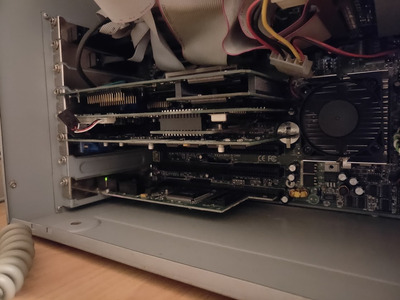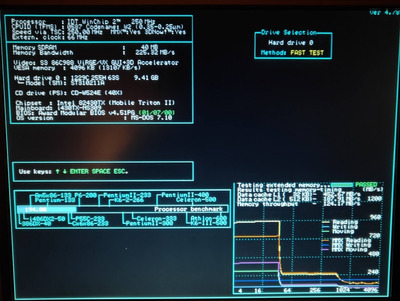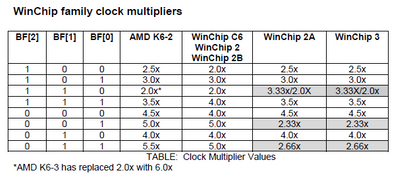First post, by JustJulião
- Rank
- Member
Weirdo is the surname I chosed myself but it deserves to be famous for its weirdness, or at least its hability to mess with MB's.
I recently got the Winchip 2A PR266, a 2.33x100 processor.
TLDR : Weird-to-impossible FSB and Multiplier settings via Jumperless configuration.
I've always liked exotic stuff, I'm more into retro hardware for the satisfaction of exploring the obscure hardware options that existed back then than out of pure nostalgia (my first PC had a Pentium II 400, I was too young to live the old 3D accelerators and old CPUs madness, and that's what I'm into currently).
That's why I needed a Winchip2.
I chose this specific version rather than the "usual" 200MHz version for its collectability and because I expected better overclocking potential.
Both because it runs at 233MHz, which is good for a Winchip2, and because it requires "only" 3.3V to do so, instead of 3.5V.
With its high FSB, it's obviously aimed at SS7 motherboards, but I honestly think the amazing EPoX MVP3-C2 I have would have been wasted running such a slow CPU. That's why I opted for an old 430TX platform, which means I'll have to play with the multiplier to achieve decent speeds.
My board is a QDI P5I430TX Titanium IB+. It has a jumperless bios function called "Speedeasy".
I expected multiplier's behavior to be quite unpredictable, but I didn't expect *that* level of weirdness.
Here is the fastest configuration I could get it running at 3.5V (for reference, I use EDO Ram here, not SD-RAM) :
250MHz.
In case you didn't figure it out, 250MHz with a 66MHz bus mean a 3.8 multiplier.
I expected 3.5, 3.66 or 4, but isn't 3.8 strange?
The obvious explanation to this would be that the reported FSB is wrong. That would make sense especially because that's absolutely not the configuration I set in Speedeasy and because Sandra actually reports... 83x3 !
Settings are 75x2.
At this point, I'm guessing that most people reading this far are assuming that Sandra is right and Speedsys is wrong.
But if that's what you think, then explain this
This sheet lists everything Sandra reported (sometimes checked with Everest) with each setting and Sandra's CPU benchmark to make sure the numbers make sense.
If Sandra is right, it means that my mb (and my memory, in slow timing though) reached as high as 103MHz FSB, just because of the CPU. I don't even know if it's possible, not only because it's a lot for a 430TX but also because AFAIK FSB frequencies are fixed, 60/66/75/83 are "hard" ones. But I might be wrong, I don't know for sure.
But even if it were one of those PLLs that can produce exotic frequencies, how could the CPU force it?
What's the most reasonable explanation to you guys, Sandra/Everest in Windows (weird FSB) or Speedsys in DOS mode (weird multiplier)?


